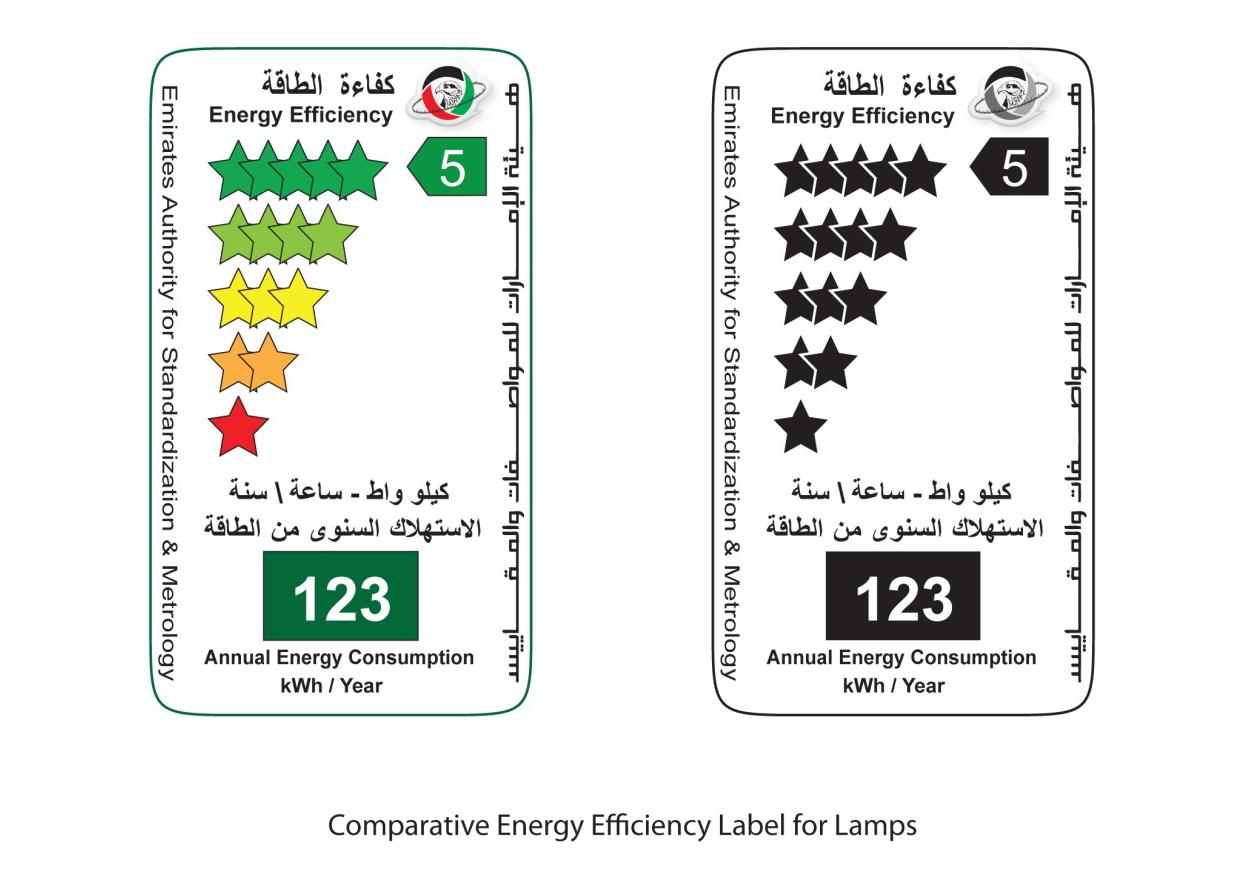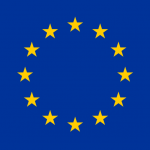We use cookies to personalize content and advertisements, to offer social media functions and to analyze access to our website.
You can revoke the given consent at any time. You can find further information in our Privacy Policy.
Sep 2014
The German Stiftung EAR has checked the guarantee parameters stated in rule ear 02-003. As a consequence, the medium disposal costs and the presumed return rates were partly changed. The new values are valid for the calculation of guarantee amounts for months of placing on the market as of January 1, 2015.
Sep 2014
 In UAE, lighting products have to fulfil a lot of requirements regarding energy efficiency, hazardous chemicals, and electrical safety. On December 31, 2013 the cabinet of UAE released Decision No. 34/2013, amending the Technical Regulation 28-11-2012 “On the requirements for approval and registration of lighting products”. The requirements of the Technical Regulation became obligatory on July 1, 2014. Regarding energy efficiency, lighting products which are imported into UAE have to be labelled accordingly. Existing products on the market will be tolerated until the end of 2014. As of January 1, 2015, non-compliant products are banned from the market.
In UAE, lighting products have to fulfil a lot of requirements regarding energy efficiency, hazardous chemicals, and electrical safety. On December 31, 2013 the cabinet of UAE released Decision No. 34/2013, amending the Technical Regulation 28-11-2012 “On the requirements for approval and registration of lighting products”. The requirements of the Technical Regulation became obligatory on July 1, 2014. Regarding energy efficiency, lighting products which are imported into UAE have to be labelled accordingly. Existing products on the market will be tolerated until the end of 2014. As of January 1, 2015, non-compliant products are banned from the market.
Products in scope:
• Incandescent lamps ≥ 16W (watts)
• Linear fluorescent lamps
• Compact fluorescent lamps (CFLs)
• Halogen lamps
• Light emitting diode (LED) lamps
• Luminaires and Control gears for general lighting purposes.
Aug 2014
Toner and ink cartridges which include electronic components are considered to be in the scope of the German ElektoG (independent from the transposition of the WEEE Directive).
This is the result of a discussion between representatives of German Umweltbundesamt (environmental protection agency), the German Stiftung ear (national WEEE register) and the industry association BITKOM on August 5, 2014.
Producers or distributors who bring toner or ink cartridges on the market which need electric current or electromagnetic fields during their use must register the company and the cartridges at ear, submit the obligatory quantity reports and mark their devices with the crossed-out wheeled waste bin.
This interpretation of the German ElektroG with respect to toner and ink cartridges with electronic components is valid immediately and can be subject to enforcement practice of local authorities.
The “new” interpretation is in line with the concept of German Stiftung ear, while industry has argued to continue to consider toner and ink cartridges as supplies material which is not in the scope of German ElektroG. This interpretation was common understanding in the past. Competent authorities are expected to examine more closely compliance with the new interpretation beginning next year, according to BITKOM.
Aug 2014
On 01, Aug 2014 | In Copyright Levies, News @en | By Alisa Maier
 Streaming services for video and audio have come in the focus of EU authorities in terms of copyright levies. EU authorities want to generate additional revenue for streaming services. 1cc has recently examined in detail what kind of claims relating to streaming and cloud services are being discussed.
Streaming services for video and audio have come in the focus of EU authorities in terms of copyright levies. EU authorities want to generate additional revenue for streaming services. 1cc has recently examined in detail what kind of claims relating to streaming and cloud services are being discussed.
Although the new streaming services require an access device like PC, Tablet or Smartphone, it usually does no longer result in a private copy: Streaming enables listening to music and watching videos without buying the music clip or the video as a file (download) and/or as hardcopy on a CD, DVD, etc.
But instead of adapting the existing levy systems or reducing the levies because less private copies will arise, thoughts of EU bodies and French socialist government, for instance, are moving in a completely different direction. Recent reports consider to apply taxation to further devices and to charge digital services in addition. This open question will be part of future negotiations with the rightholder organisations.
Jun 2014
 The European Chemicals Agency (ECHA) has added four new substances to the Candidate List. The Candidate List contains now 155 substances. Among the new substances of very high concern (SVHC) are:
The European Chemicals Agency (ECHA) has added four new substances to the Candidate List. The Candidate List contains now 155 substances. Among the new substances of very high concern (SVHC) are:
| Substance name | EC number | CAS number | Comment/Use |
| 1,2-Benzenedicarboxylic acid, dihexyl ester, branched and linear |
271-093-5 |
68515-50-4 |
Use as substitute for softener |
| Sodium perborate; perboric acid, sodium salt |
239-172-9; 234-390-0
|
– |
Use as bleaching agent in detergent industry |
| Sodium peroxometaborate |
231-556-4
|
7632-04-4 |
Use in detergents |
| Cadmium chloride |
233-296-7
|
10108-64-2 |
Use in electroplating |
As these four substances are now Candidate Substances under REACH, information requirements for Candidate Substances in articles according to Article 33 apply immediately. If applicable, manufacturers and importers have to follow the requirements for notification according to article 7.2 within 6 months, which means until December 16, 2014.
Jun 2014
On 06, Jun 2014 | In News @en | By Alisa Maier
Copyright Levies for reprographic devices like copiers, scanners and printers in Austria already being very high, have been increased further on. As every year, the tariffs are adjusted right now, valid as of 1 July 2014. The highest tariff in Austria is at the moment nearly 1.300 € per device for a Laser Multifunctional Printer and/or Laser Copier. This tariff is about 15-times more the levy in Germany for the same device; many other direct product comparisons are even more distinctly, with up to 50-times more the levy for Scanners. So far, the yearly adjustment also continuously included an error: For some products the discounted tariff was even higher than the non-discounted tariff. After six years of follow-up by 1cc GmbH, this error has finally been eliminated. Unfortunately, that was solved by a simple rule: In such a case, the next tariff higher is to be applied now.
In addition, the Austrian levy system for reprographic devices is obsolete because of its complexity: There are for any kind of reprographic devices more than 80 separate tariffs, depending on the product specifications, the contract situation of the company, the tariff caps according to the product prices, the exact date of sales, etc. The appropriate tariffing for every single device depended on up to ten characteristics! This evokes already in the everyday reporting frequent discussions with the authorities, and goes along with tax rates, deadlines and special applications, like exports, to be considered. It may be seen as the peak of complexity that the validity periods of the tariffs depends on the contractual situation of the company with collecting society Literar Mechana: the yearly indexation of tariffs take place for contracting parties from July to July, for all other companies according to the calendar year.
Thus, it requires a lot of knowledge and well organized processes to classify the products correctly and to report the sales figures in Austria, i.e. on the one hand the correct categorization of the products and equipment, and the correct application of tariffs on the other hand. These evaluations might be very elaborate, especially when detailed obligations, including tariffs, contracts, forms and further information are not instantly available. Upon request, 1cc GmbH will show you in detail the full complexity of the Austrian system.
May 2014
On May 20, 2014, eight new RoHS exemptions with respect to lead and mercury have been published as Delegated Directives in the Official Journal of the European Union. The exemptions allow a higher threshold of substances restricted in Annex II of the Directive for specific uses in electrical and electronic equipment.
Two exemptions will be included into Annex III of the Directive (general application) and six exemptions will be included into Annex IV (medical devices and monitoring and control instruments). EU member states that included the list of exemptions into their national legislation (not linked to the Annexes of the Directive directly) will have to update the list accordingly.
Within the new RoHS Directive, exemptions that have no specific date of expiration expire after five years (general application) or seven years (medical devices and monitoring and control instruments) if no extension is applied for.
http://eur-lex.europa.eu/legal-content/DE/TXT/?uri=OJ:L:2014:148:TOC
May 2014
The German Oberlandesgericht/OLG Koeln (Higher Regional Court) has passed the following sentence regarding energy efficiency labelling of computer monitors: These devices have to be considered as television monitors if they are equipped with HDMI (High-Definition Multimedia Interface), irrespective of having non-standardised video signal paths like DVI and SDI at the same time. Therefore such monitors have to be marked with an energy efficiency label indicating the energy efficiency class.
The labeling requirements are based on Regulation (EU) No 1062/2010 of September 28, 2010. In the respective case a German retailer had placed an advertisement for a video monitor with HDMI (among other technical features) without indicating the energy efficiency class of the device. The OLG Koeln classified the monitor as television monitor because of the HDMI video signal path. With this court ruling retailers are obliged to check if products they offer to end-users are labelled accordingly.
They also have to indicate the energy efficiency class of the device in any advertisement, if energy-related or price information is disclosed. Therefore, the court issued a cease and desist order against the German retailer with a penalty of 250.000 Euro for each case of non-compliance.
Retailers and manufacturers of a computer monitor which fulfil the criteria of a television monitor due to HDMI are recommended to label the device: German market surveillance authorities are expected to base their surveillance practice on this sentence.
Mar 2014
On 18, Mar 2014 | In Copyright Levies, News @en | By Alisa Maier
Again, after 2006 and 2008, the European Commission has launched a public consultation to revise EU copyright rules. The objective of this consultation is to gather input from all stakeholders on these rules. A review seems to be urgently needed, because both administration and industry have a common interest to benefit from a consolidated view about specific legal provisions and from some tightly focused amendments.
Besides the legitimate interest of companies for compliance, also several widely noticed reports show a certain need for action: among them are those of Pierre Lescure, a French media manager mandated by the Ministry of Culture to evaluate the possible future of levy systems, the recommendations of former EU commissioner António Vitorino or of Françoise Castex, member of the European parliament with the Socialist party, as well as contributions of French Minister Aurélie Filippetti..
1cc will thoroughly analyze the summary results of the public consultation, considering all stakeholder replies after publication. After a recent deadline extension for the sending of inputs until 5 March this will previously be in the course of March 2014.
Mar 2014
EU Member States have to adopt national laws, regulations and administrative provisions necessary to comply with the new Directive 2012/19/EU of 4 July 2012 on waste electrical and electronic equipment (WEEE Recast Directive). The deadline for transposition was 14 February 2014. However, most Member States did not meet this deadline.
To date, only Bulgaria, Denmark, Luxembourg, the Netherlands and the UK have implemented the new WEEE Directive into national law. Several other countries have published draft legislation, as for example Austria, Croatia, France, Germany and Italy.